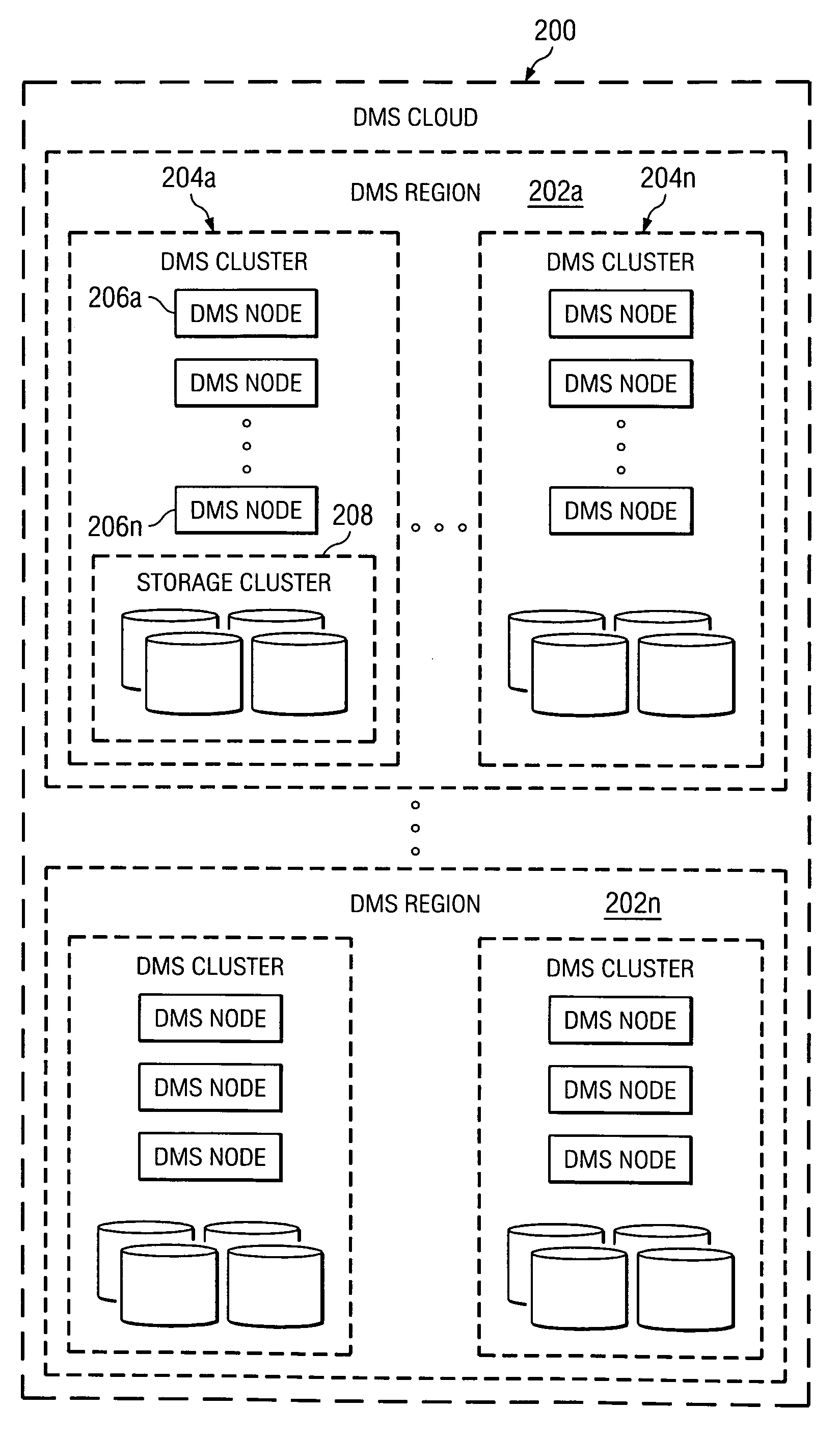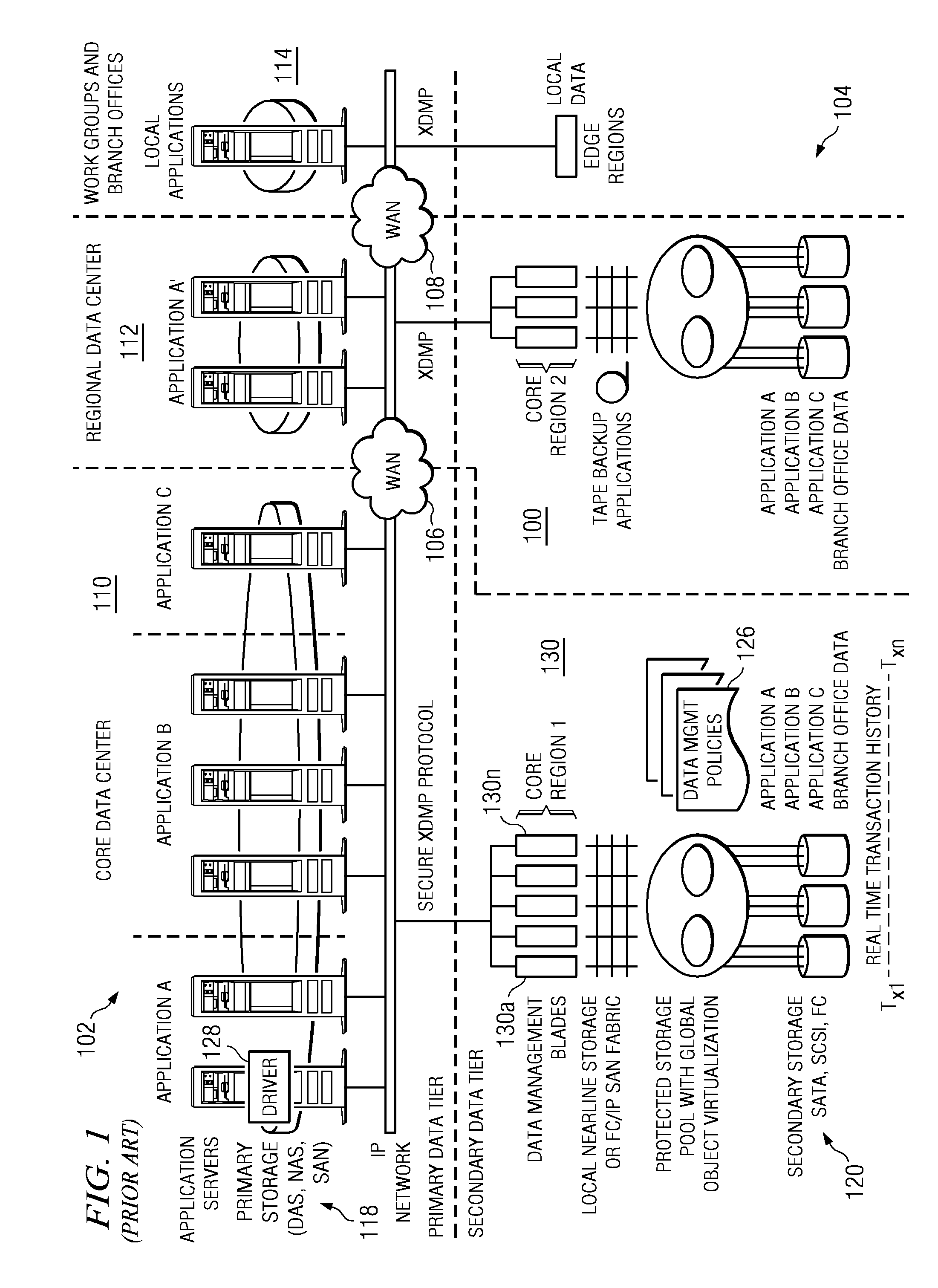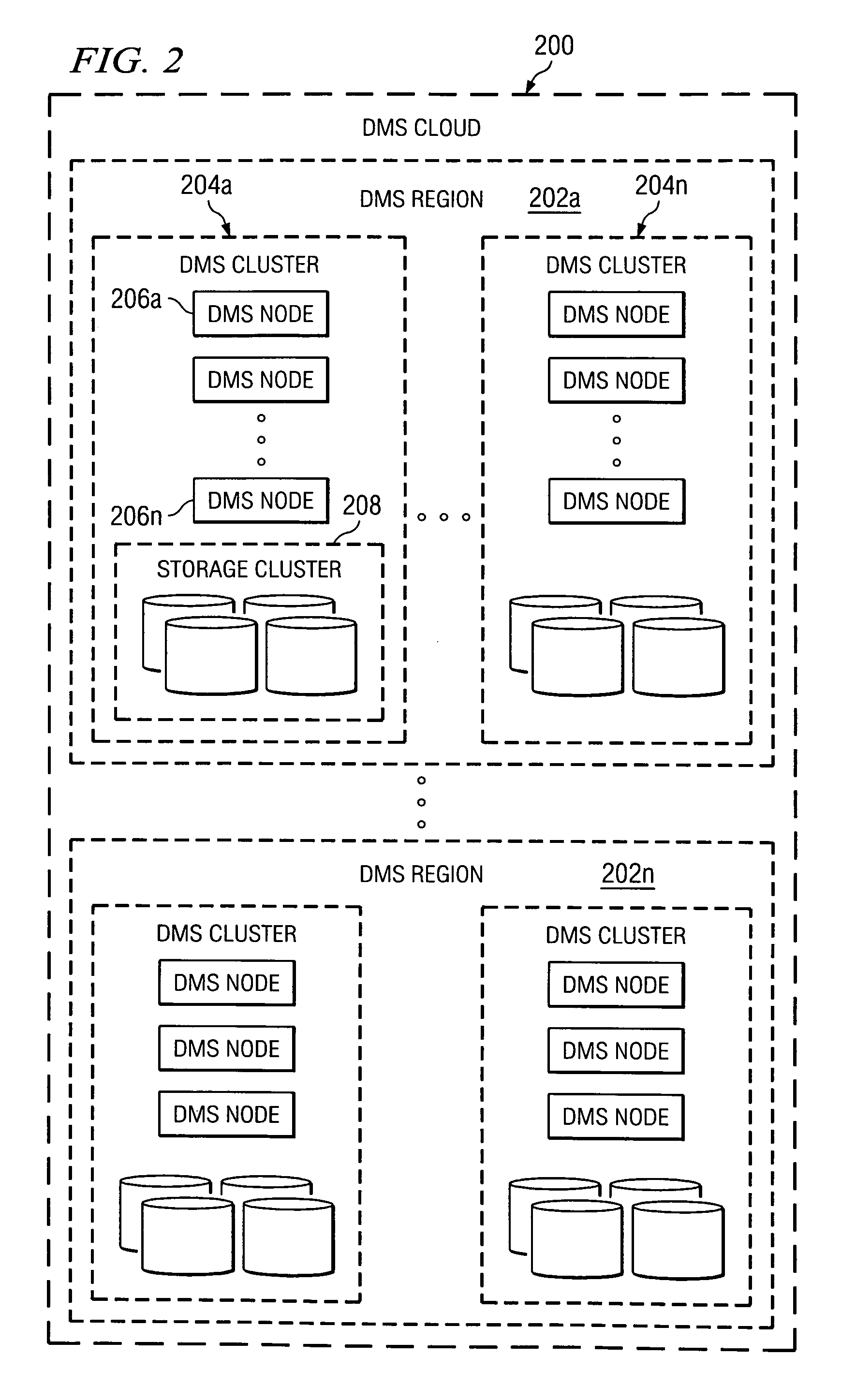Method and system for virtual on-demand recovery for real-time, continuous data protection
a data protection and real-time recovery technology, applied in the field of enterprise data protection, can solve the problems of staggering costs, data loss, data recovery, and the cost of “code red” virus alone, and achieve the effect of facilitating the data protection servi
- Summary
- Abstract
- Description
- Claims
- Application Information
AI Technical Summary
Benefits of technology
Problems solved by technology
Method used
Image
Examples
Embodiment Construction
[0034]FIG. 1 illustrates a representative enterprise 100 in which the present invention may be implemented. This architecture is meant to be taken by way of illustration and not to limit the applicability of the present invention. In this illustrative example, the enterprise 100 comprises a primary data tier 102 and a secondary data tier 104 distributed over IP-based wide area networks 106 and 108. Wide area network 106 interconnects two primary data centers 110 and 112, and wide area network 108 interconnects a regional or satellite office 114 to the rest of the enterprise. The primary data tier 102 comprises application servers 116 running various applications such as databases, email servers, file servers, and the like, together with associated primary storage 118 (e.g., direct attached storage (DAS), network attached storage (NAS), storage area network (SAN)). The secondary data tier 104 typically comprises one or more data management server nodes, and secondary storage 120, whi...
PUM
 Login to View More
Login to View More Abstract
Description
Claims
Application Information
 Login to View More
Login to View More - R&D
- Intellectual Property
- Life Sciences
- Materials
- Tech Scout
- Unparalleled Data Quality
- Higher Quality Content
- 60% Fewer Hallucinations
Browse by: Latest US Patents, China's latest patents, Technical Efficacy Thesaurus, Application Domain, Technology Topic, Popular Technical Reports.
© 2025 PatSnap. All rights reserved.Legal|Privacy policy|Modern Slavery Act Transparency Statement|Sitemap|About US| Contact US: help@patsnap.com



